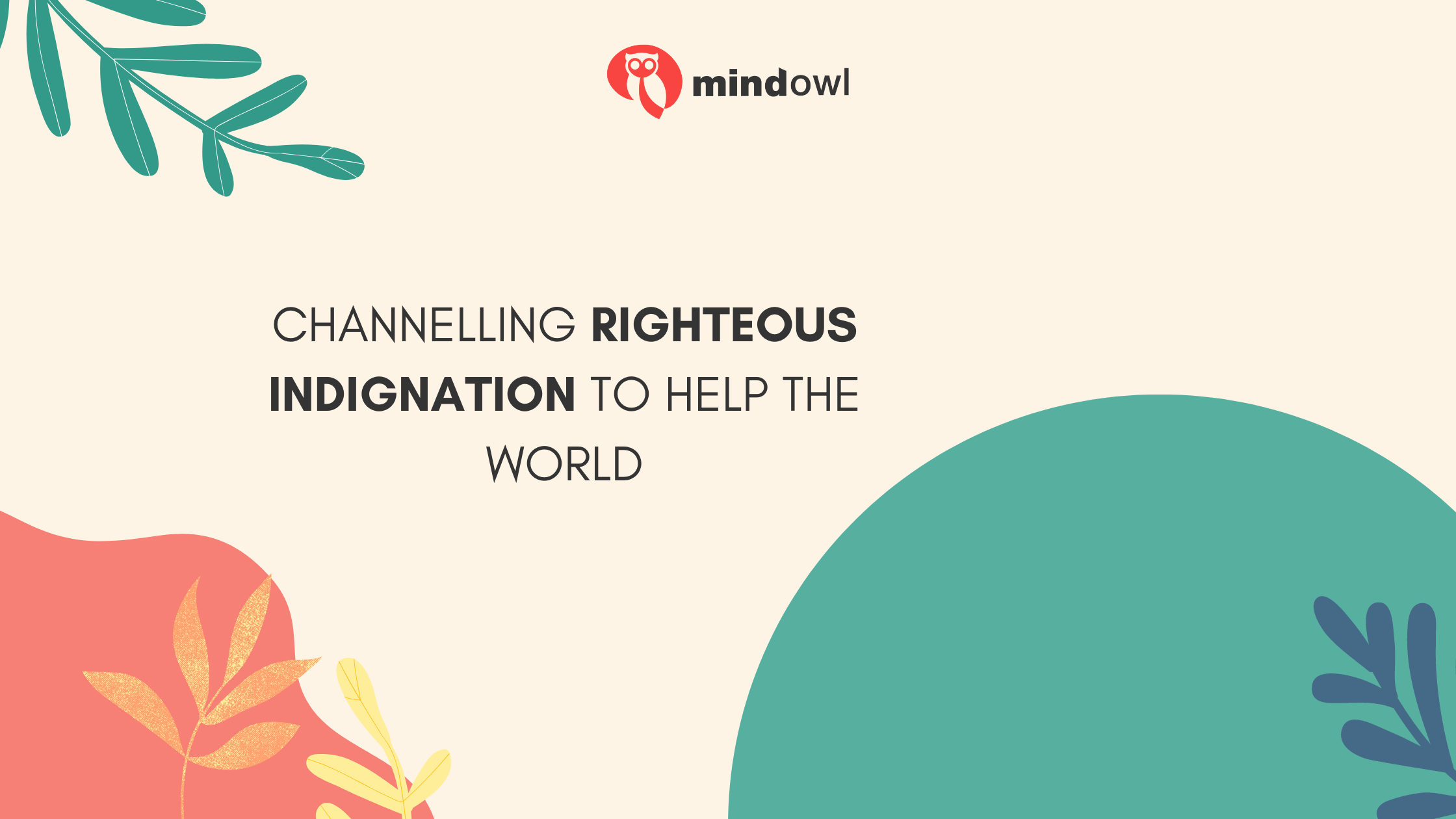Feeling outrage at unfair things is common. This emotion, known as righteous indignation, drives us to want change. Our article will show you how to use this powerful feeling for good, turning anger into action.
Get ready to make a difference.
Key Takeaways
- Righteous indignation is anger caused by unfairness or moral wrongs, like bullying or cheating.
- People have used righteous indignation for good, such as Martin Luther King Jr., who fought against racial injustice with peaceful protests.
- This powerful feeling can lead to positive actions like advocacy and activism if it’s focused on constructive solutions.
- While righteous indignation can inspire change and fight against injustice, it also has a dark side.
- Channelling righteous indignation into positive action requires focusing on fair and patient ways to correct wrongs.

Understanding Righteous Indignation
Righteous indignation is a type of anger sparked by unfairness or moral wrongs. This feeling comes from a belief that there is a breach in what is morally right. People often feel this when they see others treated badly or unjustly.
For instance, one might feel it upon hearing about bullying at school or seeing someone cheat others without remorse.
We see examples of righteous anger in action with figures like Martin Luther King Jr., who fought against racial injustice through non-violent protest. His famous “I Have a Dream” speech embodies such anger used for positive change, aiming to end segregation and discrimination against African Americans.
Similarly, modern activists use social media to shine a light on injustices worldwide, sparking movements aimed at creating fairer societies for all.
Distinguishing from Self-Righteousness and Rage
Understanding the difference between righteous anger and self-righteous indignation is key. Righteous anger comes from a place of love for people. It wants to destroy the disease of wrongdoing to heal and save individuals.
This kind of anger is patient and has control over its actions. On the other hand, self-righteous indignation makes one feel above someone else, especially when their views are questioned.
Rage, unlike these forms of anger, acts without thinking and aims to harm rather than heal. It’s impulsive and wreaks destruction wherever it goes. Knowing this helps in use our feelings for good, not just react out of hurt or a need to prove ourselves right.
The Positive and Negative Uses of Righteous Indignation
Righteous indignation can fuel us to act for good, pushing us towards positive action. It makes us stand up against wrongs and fight for change, much like Martin Luther King’s famous speech that inspired millions.
But this powerful feeling also has a dark side. It can make people feel too proud of their anger, leading them to ignore others’ views.
This “drug of choice” offers a false sense of moral high ground, often at the cost of empathy and understanding. People might use it to tear down rather than build up, forgetting the fine line between virtuous anger and destructive rage.
“Anger is not sinful in itself; it’s what we do with it that counts.”
How Righteous Indignation Can Influence Moral Grandiosity
People often feel a strong sense of moral superiority when they experience righteous indignation. This feeling can quickly turn into moral grandiosity, where they see themselves as better than others because they think their anger is justified.
Media outlets use this emotion to grab people’s attention, making them more likely to believe that their perspective is the only right one. This manipulates viewers into thinking they’re fighting for justice, even when it might not be the case.
The path from righteous indignation to feeling morally grand can make people ignore other points of view. They become less open to discussion and more focused on proving they are right.
This shift doesn’t just impact personal relationships; it also affects how groups interact on larger scales, like in political or social movements. Being aware of this progression helps individuals stay grounded and remember that everyone has flaws, encouraging a more humble approach to addressing issues.
The Role of Righteous Indignation in Social and Political Grandstanding
Righteous indignation often takes centre stage in social and political arenas. Leaders use it to draw attention to unfair situations and injustice. This feeling comes from seeing something wrong and wanting to fix it.
It’s more than just anger—it’s anger with a cause. Imagine someone speaking passionately at a rally or protest, their words fueled by this powerful emotion. They’re not just mad; they believe deeply that change is necessary.
This kind of indignation can lead to grandstanding, where figures stand up publicly for what’s right—or what they believe to be right. It lights a fire under others, inspiring them to join the cause or take action themselves.
Think about historical speeches or moments on TV when someone stood up against unfairness, sparking debates across dinner tables and media platforms alike. This isn’t about throwing angry words into the air; it’s about using those feelings as a catalyst for improvement and justice in society.
Practical Ways to Channel Righteous Indignation into Constructive Acts
Channel your righteous indignation into positive action by focusing on constructive solutions and creating tangible change. Use your anger as a driving force for advocacy, activism, and standing up for what is right in the world.
- Separating the Rage from the Righteousness
To tell the difference between rage and righteousness, we need to look closely. Righteous anger helps us fix wrongs in a way that’s fair and patient. It’s like what many Christians believe—anger can be good if it brings people closer in a loving way, much like God’s anger does.
But not all anger is created equal. Some of it comes from selfish places and only aims to hurt, not heal.
Anger should be a starting point, not an end goal.”
Using your feelings for something positive is key. Imagine turning that energy into actions that help rather than harm. This means speaking up about injustices or helping those less fortunate without letting rage take control.
It’s about being slow to anger but quick to act on behalf of others, following examples set by leaders who changed the world with their controlled passion.
- Using Righteous Indignation for Positive Action
Turn your righteous anger into positive change. Get involved with groups fighting bad influences in our world. Use your moral fury to support acts that make society better. Jesus showed us this type of anger is not wrong.
Your strong feelings can fuel good deeds and activism. Make sure the source of your irritation is just and true, then take action. Help save the world by turning your indignation into steps that truly matter for everyone’s welfare.
The Impact of Righteous Indignation on Society and the World
The impact of righteous indignation on society and the world is profound. It has been a catalyst for social change, propelling movements that fought against injustice and inequality.
This force of moral outrage has amplified important messages through social media, creating widespread awareness about critical issues. However, there’s also a cautionary note; when unchecked, righteous indignation can lead to destructive tendencies and undermine its virtuous potential.
Properly channelled, it carries immense power to address societal injustices and promote healing from systemic wrongs.
Righteous anger is not merely an emotion; it’s a loaded source of energy that can be harnessed for positive change and justice. The cautious processing of this potent force will guard against self-destructive outcomes while ensuring its transformation into a driving force for societal healing from deep-rooted injustices.
Conclusion
Channelling righteous indignation can fuel positive change in the world. It is a powerful force for addressing injustice and driving activism. Embracing intense feelings of righteous anger can lead to constructive action and transformation in society.
When harnessed for good, righteous indignation has the potential to combat fear, anger, and hatred, making a difference on a global scale.
FAQs
1. What is righteous indignation?
Righteous indignation is a form of anger that’s not considered sinful — it’s the kind of anger you feel when you see something truly unfair or wrong in the world, like Martin Luther King Jr.’s drive for equality.
2. Can righteous anger actually help the world?
Yes, indeed! Shows like Andrew Breitbart’s work with his network of conservative websites prove that using your anger for a cause can lead to significant changes and challenge societal norms.
3. How did people like Andrew Breitbart use their anger positively?
Andrew Breitbart channeled his frustration into creating new media platforms, such as Breitbart.com, to voice opinions and expose stories ignored by what he saw as a liberally biased news media complex.
4. Is there ever a good time to be angry?
Absolutely — when your anger stems from seeing injustice or hypocrisy, it can motivate you to take action and demand better standards and fair treatment for everyone.
5. How should one handle feeling angry without causing harm?
The key is focusing your energy on constructive actions — speaking up against injustices, supporting causes you believe in, or even starting conversations about difficult topics can all be positive ways to deal with your feelings.
6. Are there any examples of successful outcomes from channeling righteous indignation?
Many movements throughout history have started from a place of righteous indignation; think about the Tea Party or activists like James O’Keefe and Hannah Giles who used their outrage to spark discussions and bring issues to light.
MindOwl Founder – My own struggles in life have led me to this path of understanding the human condition. I graduated with a bachelor’s degree in philosophy before completing a master’s degree in psychology at Regent’s University London. I then completed a postgraduate diploma in philosophical counselling before being trained in ACT (Acceptance and commitment therapy).
I’ve spent the last eight years studying the encounter of meditative practices with modern psychology.

